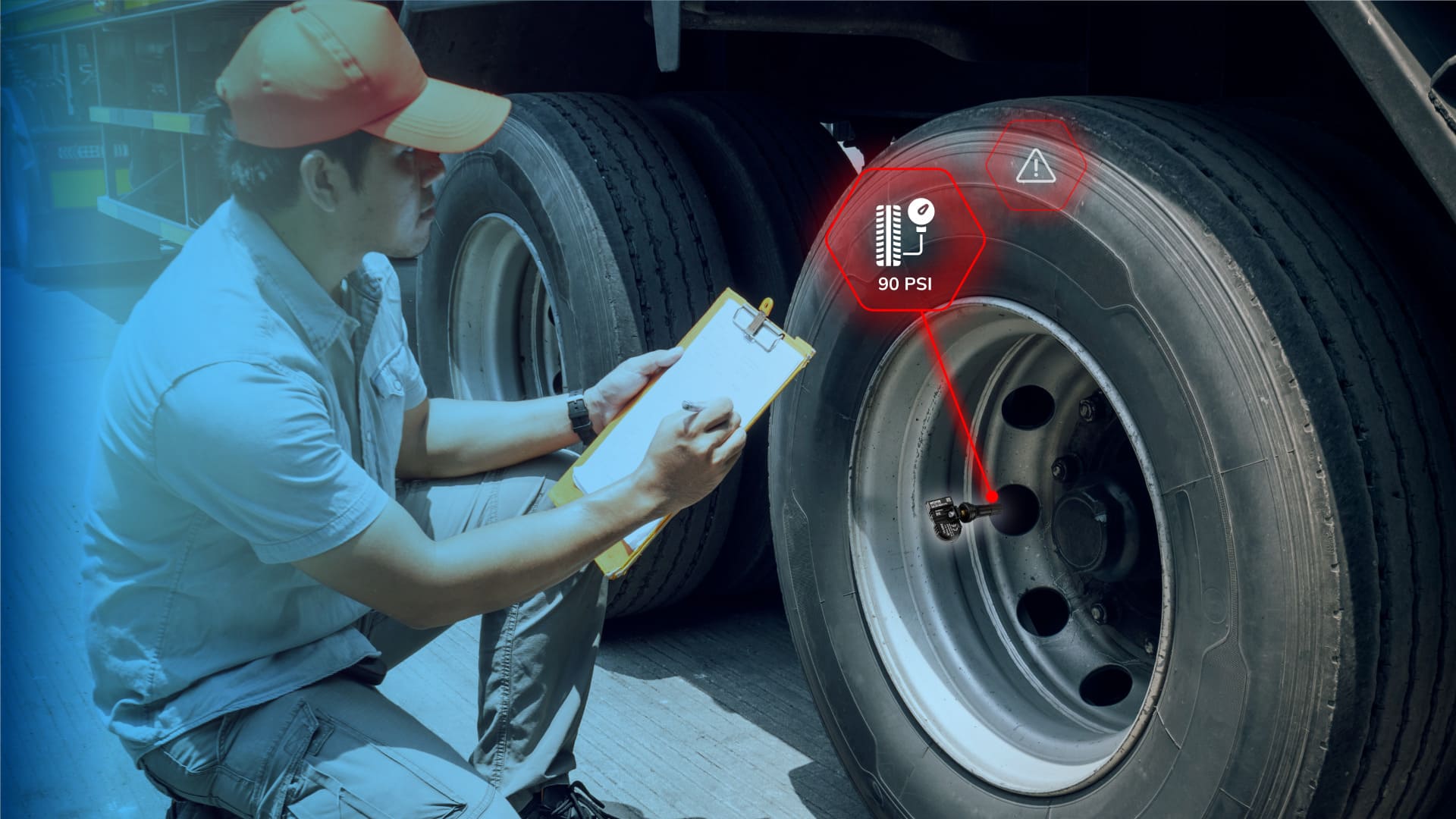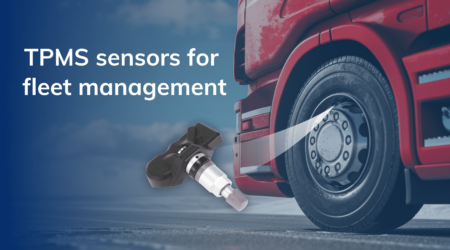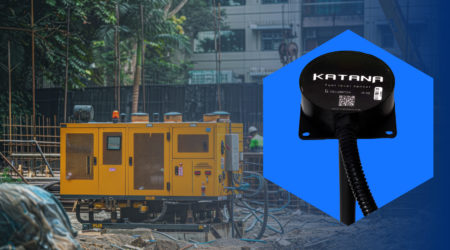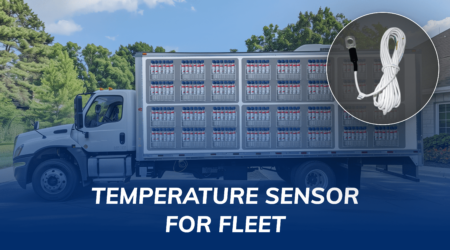Why Fleet Managers Need Tire Pressure Monitor Sensors?

Imagine managing a fleet where each day is filled with the challenge of keeping operations running smoothly. Among all the responsibilities, from scheduling maintenance to ensuring driver safety, tire upkeep might seem like a small detail. However, as someone deeply involved in fleet management, you know that tires are critical. They’re the direct link between the vehicle and the road. Overlooking tire maintenance can lead to costly repairs, reduced fuel efficiency, and potential safety hazards. We’ll further explore why paying attention to tire care is crucial and how it plays a pivotal role in the overall performance and safety of your fleet. Let’s uncover the importance of this often-overlooked aspect of fleet management.
Managing tire pressure manually across an entire fleet can be challenging and time-consuming. This is where a tire pressure monitor sensor (TPMS) becomes efficient for fleet managers. TPMS technology provides real-time monitoring and alerts for tire pressure issues, enabling proactive maintenance and immediate corrective actions.
Understanding Tire Pressure Monitor Sensors
A tire pressure monitor sensor (TPMS) is a crucial technology that measures the air pressure inside the tires and ensures that this pressure remains within the optimal range. By transmitting real-time data to drivers or fleet managers, TPMS helps maintain tire health and vehicle safety. When the system detects any irregularities in tire pressure, it triggers alerts, allowing for prompt corrective actions.
There are two main types of TPMS: Direct and Indirect.
Direct TPMS employs sensors installed within each tire, delivering accurate pressure measurements.These sensors transmit data to a central monitoring system, offering real-time, accurate information about each tire’s condition. This method is highly reliable, giving exact pressure levels and enabling fleet managers to identify and address specific issues promptly.
In contrast, Indirect TPMS does not measure tire pressure directly. Instead, it relies on the vehicle’s anti-lock braking system (ABS) to monitor wheel speed. Differences in wheel speed indicate changes in tire pressure, as under-inflated tires have a smaller diameter and rotate faster. While indirect TPMS can be easier to install and maintain, it may not offer the same level of precision as direct TPMS.
Understanding these systems is essential for fleet managers to make informed decisions about which TPMS to implement. By choosing the right type of TPMS, fleet managers can ensure better tire maintenance, improved safety, and enhanced overall fleet performance. This investment in tire pressure monitoring not only extends tire life but also contributes to significant cost savings and operational efficiency in the long run.
The Importance of Proper Tire Pressure
Maintaining the correct tire pressure is crucial for several reasons:
1. Safety
Properly inflated tires ensure better handling and braking, which significantly reduces the risk of accidents. Consistent tire pressure allows for optimal tire performance, enhancing vehicle stability and control, especially in emergency situations or adverse weather conditions.
2. Fuel Efficiency
Correct tire pressure can improve fuel efficiency by reducing rolling resistance. Under-inflated tires create more friction, making the engine work harder and consume more fuel. Maintaining optimal tire pressure helps fleet managers reduce fuel consumption and operating costs.
3. Tire Longevity
Proper inflation extends the life of tires by preventing uneven wear. Tires that are consistently maintained at the correct pressure experience even tread wear, which can significantly prolong their usable life and reduce the frequency of replacements.
4. Environmental Impact
Better fuel efficiency and prolonged tire life contribute to a lower carbon footprint. By reducing fuel consumption and the number of discarded tires, fleet managers can make a positive environmental impact, supporting sustainability goals and reducing the fleet’s overall environmental footprint.
Benefits of Using Tire Pressure Monitor Sensors
1. Enhanced Safety
One of the primary reasons fleet managers should invest in TPMS is to enhance safety. Under-inflated or over-inflated tires can lead to dangerous situations on the road. Under-inflated tires can overheat and fail, while over-inflated tires can cause blowouts. TPMS provides real-time alerts, allowing drivers to address tire pressure issues before they become critical.
2. Improved Fuel Efficiency
The fuel costs constitute a significant portion of a fleet’s operating expenses. Proper tire pressure enhances fuel efficiency by minimizing rolling resistance. Under-inflated tires increase rolling resistance, which forces the engine to work harder and consume more fuel.
3. Extended Tire Life
Tires are a considerable investment for any fleet. Extending their life can lead to substantial cost savings. Improper tire pressure leads to uneven tire wear, which shortens their lifespan. By using TPMS, fleet managers can ensure tires are always inflated to the correct pressure, promoting even wear and extending tire life.
4. Reduced Downtime
Unexpected tire failures can lead to vehicle downtime, which affects productivity and profitability. TPMS helps prevent such failures by providing early warnings of potential tire issues. This proactive strategy enables fleet managers to schedule maintenance before minor issues escalate into major problems.
5. Lower Maintenance Costs
Regular tire maintenance can be costly, but ignoring tire pressure can lead to even higher expenses. TPMS reduces the need for frequent manual pressure checks and helps prevent costly repairs associated with tire failures. By catching issues early, fleet managers can reduce overall maintenance costs.
Implementing TPMS in Fleet Management
Integrating TPMS into your fleet management system is straightforward and can be done in a few steps:
- Assess Your Fleet’s Needs: Determine the type of TPMS suitable for your fleet. Direct TPMS offers more accuracy, while Indirect TPMS is often easier to install. Understanding your fleet’s specific requirements will help in choosing the most effective solution.
- Choose the Right System: Select a TPMS that fits your fleet’s specific requirements. Ensure it provides real-time alerts and integrates seamlessly with your existing fleet management software. Compatibility and ease of use are crucial for successful implementation.
- Install the Sensors: Follow the manufacturer’s instructions for installing TPMS on your vehicles. This may involve placing sensors inside the tires or installing wheel speed sensors. Proper installation ensures accurate readings and reliable performance.
- Monitor and Maintain: Regularly check the TPMS for any signs of wear or malfunction. Ensure that drivers are trained to respond to alerts promptly. Continuous monitoring and maintenance will help maximize the benefits of TPMS, ensuring ongoing safety and efficiency.
Various TPMS Solution catered in the market
One can search for a TPMS solution designed to meet the needs of modern fleet managers. The system which can provide real-time tire pressure data, alerts for pressure deviations, and seamless integration in the fleet management software. By using the TPMS feature, fleet managers can enhance safety, reduce costs, and improve overall fleet efficiency.
Real-World Applications and Case Studies
Many fleet managers have already experienced the benefits of TPMS. Here are a few examples:
- Logistics Companies: A logistics company reduced its fuel costs by 5% and extended tire life by 20% after implementing TPMS. The real-time monitoring allowed for proactive maintenance, minimizing downtime and improving overall efficiency.
- Public Transportation: A city bus fleet saw a significant decrease in tire-related incidents, improving overall safety and reliability. This led to better service for passengers and reduced maintenance costs for the fleet.
- Construction Fleets: Construction vehicles, often operating in harsh conditions, benefited from TPMS by reducing unexpected tire failures and maintenance costs. The improved tire management contributed to more reliable operations and cost savings.
Overcoming Challenges with TPMS
While TPMS offers numerous benefits, there can be challenges in its implementation:
- Initial Costs: The upfront cost of TPMS can be a concern. However, the long-term savings in fuel, tire replacement, and maintenance far outweigh the initial investment. Fleet managers should consider the return on investment and long-term benefits when evaluating the cost.
- Training: Drivers and maintenance staff need to be trained to understand and respond to TPMS alerts. This can be managed through regular training sessions and clear protocols. Proper training ensures that the system is used effectively and its benefits are maximized.
- Integration: Ensuring that TPMS integrates smoothly with existing fleet management systems is crucial. Choosing a compatible system and working with experienced providers can modify this issue. Seamless integration ensures that data from TPMS is effectively utilized for fleet management.
The Future of TPMS in Fleet Management
As technology advances, TPMS will continue to evolve. Future developments may include:
- Advanced Analytics: Integration with AI and machine learning to predict tire issues before they occur. These technologies can provide deeper insights and more accurate predictions, enhancing preventive maintenance.
- Enhanced Sensors: More accurate and durable sensors that provide detailed tire health data. Improvements in sensor technology will lead to better performance and reliability of TPMS.
- Integration with Autonomous Vehicles: TPMS will play a critical role in the safety and efficiency of autonomous fleets. As autonomous vehicles become more prevalent, TPMS will be essential for maintaining their safety and operational efficiency.
Conclusion
Tire pressure monitor sensors are a valuable tool for fleet managers. They enhance safety, improve fuel efficiency, extend tire life, reduce downtime, and lower maintenance costs. By integrating TPMS into their fleet management systems, managers can ensure their fleets operate smoothly and efficiently. Market offers a robust TPMS solution designed to meet the needs of modern fleets. You can visit various websites to learn more about how our TPMS can benefit your fleet.
Incorporating TPMS is not just a technological upgrade; it’s a strategic move towards more efficient and safer fleet operations. Don’t wait for tire issues to become costly problems. Invest in TPMS today and drive your fleet towards a more profitable future.




